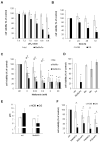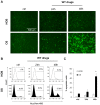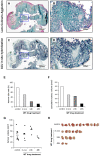The Warburg Trap: A Novel Therapeutic Approach for Targeting Osteosarcoma
- PMID: 38201265
- PMCID: PMC10778102
- DOI: 10.3390/cells13010061
The Warburg Trap: A Novel Therapeutic Approach for Targeting Osteosarcoma
Abstract
Although urgently needed, no significant improvements in osteosarcoma (OS) therapy have been achieved within the last decades. Here, we present a new therapeutic approach based on drug combinations consisting of mitochondrial complex I (MCI) inhibitors and ionophores that induce cancer cell-specific cell death based on a modulation of cellular energy metabolism and intracellular pH (pHi) named the Warburg Trap (WT). The effects of several drug combinations on intracellular pH, cell viability, colony-forming capacity and expression of WNT-target genes were analysed using OS cell lines and primary human osteoblasts (HOB). Tumour take rates and tumour volumes were analysed in vivo using a chicken chorioallantoic membrane assay (CAM). Several WT drug combinations induced the intracellular acidification and apoptotic cell death in OS cells, whereas HOBs tolerated the treatment. A significant inhibition of the colony-forming ability of OS cells and downregulation of WNT-target genes suggest that cancer stem cells (CSCs) are also targeted by the WT approach. In vivo, we observed a significant reduction in the tumour take rates in response to WT drug treatment. Our data suggest that the Warburg Trap is a promising approach for the development of a novel and effective OS therapy to replace or supplement the current OS chemotherapy.
Keywords: Warburg Trap; apoptosis; cancer stem cells; chemotherapy; osteosarcoma.
Conflict of interest statement
The authors declare no conflicts of interest.
Figures






Similar articles
-
Let-7d miRNA Shows Both Antioncogenic and Oncogenic Functions in Osteosarcoma-Derived 3AB-OS Cancer Stem Cells.J Cell Physiol. 2016 Aug;231(8):1832-41. doi: 10.1002/jcp.25291. Epub 2016 Jan 28. J Cell Physiol. 2016. PMID: 26679758
-
15d-PGJ2 Promotes ROS-Dependent Activation of MAPK-Induced Early Apoptosis in Osteosarcoma Cell In Vitro and in an Ex Ovo CAM Assay.Int J Mol Sci. 2021 Oct 29;22(21):11760. doi: 10.3390/ijms222111760. Int J Mol Sci. 2021. PMID: 34769194 Free PMC article.
-
Sensitivity of osteosarcoma cells to HDAC inhibitor AR-42 mediated apoptosis.BMC Cancer. 2017 Jan 21;17(1):67. doi: 10.1186/s12885-017-3046-6. BMC Cancer. 2017. PMID: 28109246 Free PMC article.
-
The Fas/FasL Signaling Pathway: Its Role in the Metastatic Process and as a Target for Treating Osteosarcoma Lung Metastases.Adv Exp Med Biol. 2020;1258:177-187. doi: 10.1007/978-3-030-43085-6_12. Adv Exp Med Biol. 2020. PMID: 32767242 Review.
-
mTOR: An attractive therapeutic target for osteosarcoma?Oncotarget. 2016 Aug 2;7(31):50805-50813. doi: 10.18632/oncotarget.9305. Oncotarget. 2016. PMID: 27177330 Free PMC article. Review.
References
-
- Gelderblom H., Jinks R.C., Sydes M., Bramwell V.H., van Glabbeke M., Grimer R.J., Hogendoorn P.C., McTiernan A., Lewis I.J., Nooij M.A., et al. Survival after recurrent osteosarcoma: Data from 3 European Osteosarcoma Intergroup (EOI) randomized controlled trials. Eur. J. Cancer. 2011;47:895–902. doi: 10.1016/j.ejca.2010.11.036. - DOI - PubMed
MeSH terms
Substances
LinkOut - more resources
Full Text Sources
Medical

